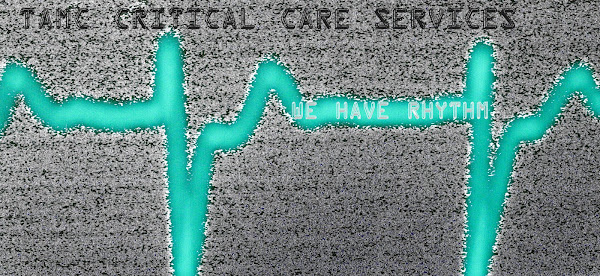Nebulized Heparin in Mechanically Ventilated Patients
Gregory S. Martin, MD, MSc
Authors and Disclosures
Posted: 11/16/2010
$(document).ready(function() {adexGet('/ratetopcontent?contentId=732196','adexratethiscontainertop','autoloadwait1',undefined,handleFetchRatingTop);});
Nurse Rating:
( 0 Votes )
Rate This Article:
Print This
Email this
Share
Facebook Twitter
processing....
Nebulized Heparin Is Associated With Fewer Days of Mechanical Ventilation in Critically Ill Patients: A Randomized Controlled Trial
Dixon B, Schultz MJ, Smith R, Fink JB, Santamaria JD, Campbell DJCrit Care. 2010;14:R180
Study Summary
Ventilator-induced lung injury (VILI) is an important and relatively common condition among mechanically ventilated patients. Dixon and associates sought to determine if nebulized heparin might improve lung function by reducing pulmonary inflammation and fibrin deposition. This may be particularly important in patients most likely to develop VILI, such as those who require prolonged mechanical ventilation.
The investigators randomly assigned 50 patients who were expected to require mechanical ventilation for > 48 hours to receive either nebulized heparin (25,000 U) or placebo (normal saline) every 4 or 6 hours, depending on patient height, for a maximum of 14 days while mechanically ventilated. They found that nebulized heparin was not associated with any adverse events and did not improve oxygenation. There was no difference in survival, but patients treated with nebulized heparin had more days alive and free of mechanical ventilation (ventilator-free days at day 28: 22.6 vs 18.0, P = .02). On the basis of these results, the investigators concluded that nebulized heparin is associated with fewer days of mechanical ventilation in critically ill patients expected to require prolonged mechanical ventilation, and further trials are required to confirm these findings.
Viewpoint
This randomized clinical trial suggests that nebulized heparin may benefit critically ill mechanically ventilated patients. There are certainly other reports of potentially beneficial effects of anticoagulation in critically ill patients, including the US Food and Drug Administration-approved drug recombinant human activated protein C used to treat severe sepsis. Moreover, heparin use has specifically been associated with improved outcomes in critically ill patients with septic shock. However, little or no data have demonstrated the efficacy of nebulized heparin for mechanically ventilated patients. Although the novelty of this study makes the findings exciting, it also raises more questions about validity and clinical application. At present, there is no reason to be administering nebulized heparin to critically ill patients. As Dixon and associates conclude, these findings require replication to ensure their accuracy. While we wait for more data, how might we judge the veracity of the findings? Could nebulized heparin have truly reduced the duration of mechanical ventilation? One method is to apply specific criteria to strengthen the hopeful cause-and-effect association:
There is a clear temporal relationship, as always in a prospective treatment trial, between the intervention and the outcome;
The strength of the association is reasonably strong, with a 4.6-day (21%) reduction in the duration of mechanical ventilation;
There is biologic plausibility, with mechanistic considerations;
Pre-existing data suggest benefits in other populations;
In a randomized, controlled trial, few other (confounding) variables explain these findings;
No dose-response testing was done to strengthen the relationship; and
Findings have less coherence to existing paradigms on methods to shorten the duration of mechanical ventilation.
Kudos to the investigators for exploring this new world and opening the door to a potential new therapy!
Abstract
Wednesday, November 24, 2010
Friday, October 22, 2010
Saturday, June 26, 2010
You asked for it....
For those of you who want to purchase your very own TAMC CCU logo gear I created a shop at cafe press with tee's, sweatshirt etc. You are part of an specially trained few in our organization so if you are as proud of the care we provide as I am, here's your opportunity to show it.
http://www.cafepress.com/TAMCCCU
http://www.cafepress.com/TAMCCCU
Wednesday, June 9, 2010
Mutual Respect is necessary to maintain dialogue. From the moment respect is at risk, the conversation is no longer about getting results and dialogue comes to a screeching halt.
Why? Because respect is like air: if you take it away, it's all people can think about. At that point, the conversation is all about defending dignity.
Use these telltale signs to recognize when respect is at risk during a conversation, and address that issue before trying to resolve the content of the conversation.
• Interruptions
• Pouting
•Name-calling
• Looks of pain, fear, or hurt feelings
• Anger
• Yelling
• Insults
• Threats
Why? Because respect is like air: if you take it away, it's all people can think about. At that point, the conversation is all about defending dignity.
Use these telltale signs to recognize when respect is at risk during a conversation, and address that issue before trying to resolve the content of the conversation.
• Interruptions
• Pouting
•Name-calling
• Looks of pain, fear, or hurt feelings
• Anger
• Yelling
• Insults
• Threats
Sunday, May 9, 2010
Saturday, April 17, 2010
Wednesday, March 31, 2010
New Read...
HTN urgency medicine article, peritnent given the volume of patients we have seen with this lately. A real shocker I found as I was reading through the article was this one....who knew?
i.v. nicardipine with i.v. sodium nitroprusside for the treatment of hypertensive emergency in a randomized trial of 40 patients. Significant reductions in SBP and DBP were observed in both groups, with no significant time-dependent differences between groups. Patients randomized to nicardipine had a greater drop in noradrenaline levels compared with patients treated with sodium nitroprusside.
Definetly safer given the thiocy-anate toxicity effects of Nipride.
http://www.medscape.com/viewarticle/715621_2
i.v. nicardipine with i.v. sodium nitroprusside for the treatment of hypertensive emergency in a randomized trial of 40 patients. Significant reductions in SBP and DBP were observed in both groups, with no significant time-dependent differences between groups. Patients randomized to nicardipine had a greater drop in noradrenaline levels compared with patients treated with sodium nitroprusside.
Definetly safer given the thiocy-anate toxicity effects of Nipride.
http://www.medscape.com/viewarticle/715621_2
Saturday, February 20, 2010
Newest of the new

And along with the new heart monitors comes the ability to computerize our documentation! So iNet is coming in June. Some new assessment tools will need to be learned~ CAM and MAAS scores instead of Ramsey-check you email for more info on those tools-I'm having issues getting the images to show on here.

just a few images of installation day-we wouldn't have survived without a little therapeutic chocolate.
New Torsdes des Pointes AHA info
http://circ.ahajournals.org/cgi/reprint/CIRCULATIONAHA.109.192704
There is a great table in there with drugs that induce torsades as well as QT and QTC measurements.
There is a great table in there with drugs that induce torsades as well as QT and QTC measurements.
Monday, January 18, 2010
Are you thinking of Certification?

An optimist is a person who sees a green light everywhere, while a pessimist sees only the red stoplight... The truly wise person is color-blind.
Albert Schweitzer
Albert Schweitzer
Subscribe to:
Comments (Atom)


